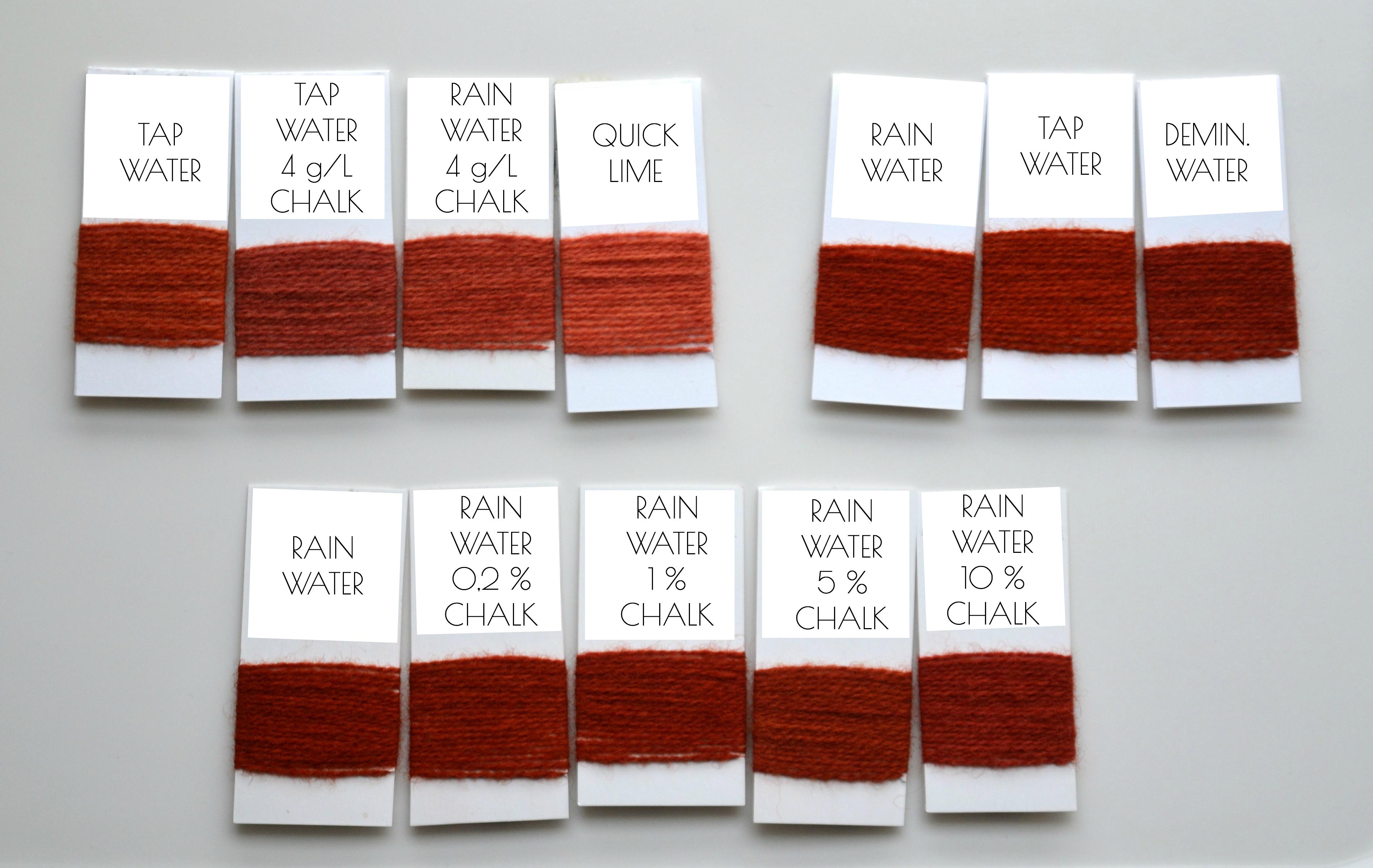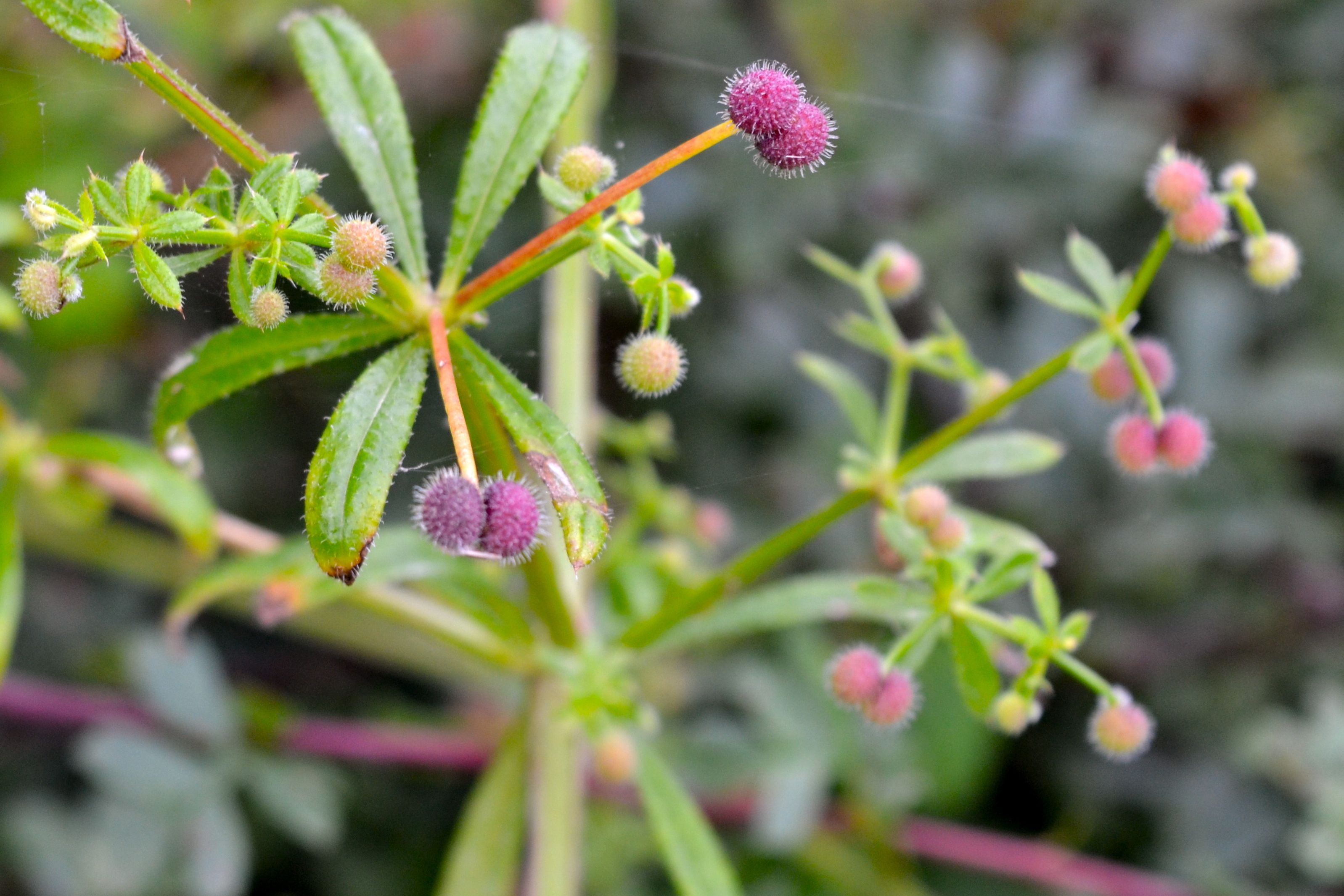Indian madder is one of European madder’s close relatives, and the two plants have both been part of human history for many centuries. Every natural dyer knows madder. Madder (Rubia tinctorum), which I’m going to refer to as European madder here, is one of the standard colors in the natural palette – the only good […]
There is a handful of dye plants that should be found in any dye garden. Woad is one of those, in my opinion. Woad is one of the very old cultivated dye plants – in Denmark, it has been cultivated since more than 2000 years ago. So although the plant gives rise to much less […]
Cutch extract has a huge tannin content, making it almost universally useful to the natural dyer. It can be used both as a mordant and a dye. Cutch is an extract from the acacia tree, and it has almost as many applications as it has names: cutch, catechu, kath, seesiat, kasu, cacho, terra japonica…. The […]
Leaves from Japanese indigo and woad can be for a very rapid blue dye without adding anything else. The leaves just have to be fresh picked and you need to work quickly on ice! During last summer, I experimented a bit with ice dyeing, which is a well known method for dyeing with fresh Japanese […]
Cocheneal is truly an amazing insect, with its huge content of red dye. Along with madder, indigo, and yellow from local plants, it allows the natural dyer to dye all the colors of the rainbow. When the Spanish conquistadors arrived in present-day Mexico in 1519, they were on a treasure hunt – for gold and […]
Warm summer weather doesn’t exactly make you want to knit wool. So I’ve started dyeing Midsommer, a thin 3-ply pure linen yarn. So far, I’ve mostly dyed wool, and dyeing plant fibres really is something completely different. Textiles made from linen are known way back in ancient times, and the oldest find of linen textile […]
The summer of 2017 was cold and wet in Denmark, and gave way to a fall season with an abundance of dye mushrooms. 2018 is already getting old, but I haven’t finished dyeing with all my mushrooms from 2017 until now. 2017 was a really good year for dye mushrooms. And edible ones, too. In […]
Most sources agree that you need chalk to unlock the true reds of madder. I’ve always had a difficult time reconciling that with my own results, so experiments were called for. ~ I spent the past summer with a lot of experimental dyeing, and one of my themes was how chalk affects madder red. Earlier […]
Madder has several relatives that are also rich in useful reds. These plants are native here in Denmark, and have been used as red dyes a very long time back. Believe it or not, the year is drawing to a close. So, I want to try to summarize all the many dyeing experiments I did […]
Among some natural dyers, tansy is seen as quite boring. It’s a common plant, easy to find, easy to dye with, and it contains the so-common yellow – just like so many other plants. But tansy has a long cultural history, and its yellow dye is of high quality! ~ Tansy’s common name is simply […]








